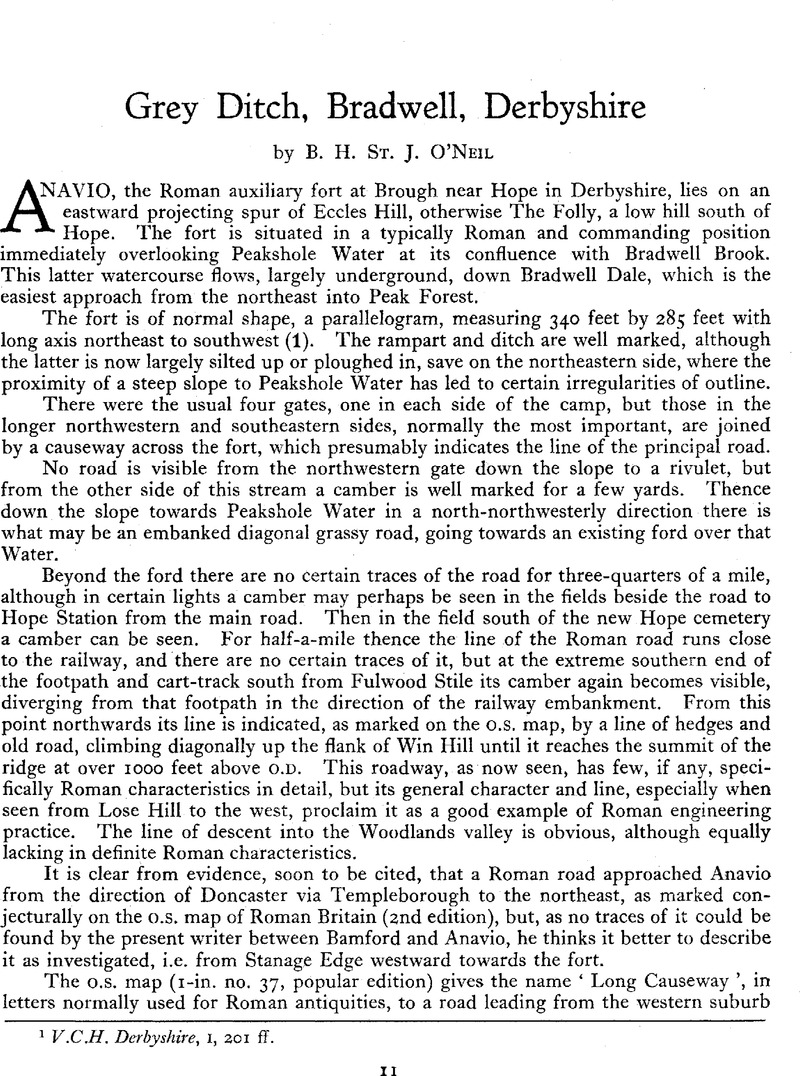No CrossRef data available.
Published online by Cambridge University Press: 02 January 2015

1 V.C.H. Derbyshire, I, 201 ff.
2 Derbyshire, 1, 359-60.
3 It does not seem that this portion of the earthwork has hitherto been recorded.
4 An illustration of the use made of such an earthwork during the struggle between Celt and Saxon occurs in the poems of Llywarch Hen. There Gwên, the last of Llywarch’s twenty-four sons ‘by the Llawen kept watch that night. In the fight he fled not. Sad is the tale, on Gorlas Dyke. At the ford of Morlas, Gwên fell’. (Ifor Williams, Rhys Memorial Lecture, 1932 (Proc. Brit. Acad., XVIII), 19.
5 Bray’s Tour through Yorks. and Derby, 204, in V.C.H. Derbyshire, 1, 360. These weapons appear to have been found where no bank now occurs (v. p. 16) and where perhaps a wide gap was deliberately left. It could naturally be the scene of warlike encounters.
6 Pitt-Rivers, Excavations in Bokerly Dyke and Wansdyke, 28-30.
7 ibid.
8 ANTIQUITY, 1929, p. 150.
9 The complete absence of sceattas in Derbyshire argues against early working of the lead mines of the county, V. Num. Chron., 1942, opp. p. 69
10 Ibid. p. 50.
11 V.C.H., 1, 265 ff.
12 Roman Britain and the English Settlements, 417.
13 V.C.H., 1, 191 ff.
14 ANTIQUITY, 1932, 190.
15 Ordnance Map of Britain in the Dark Ages, South Sheet, O.S. 1935.
16 The presence of Roman pigs of Derbyshire lead on the Humber at Brough and South Cave has been held to suggest that the metal was carried there for export (Arch. Journ., XLVII, 257-8). The Angles may well have taken the same route in the reverse direction, by water up the Don, and thence by the road under discussion.